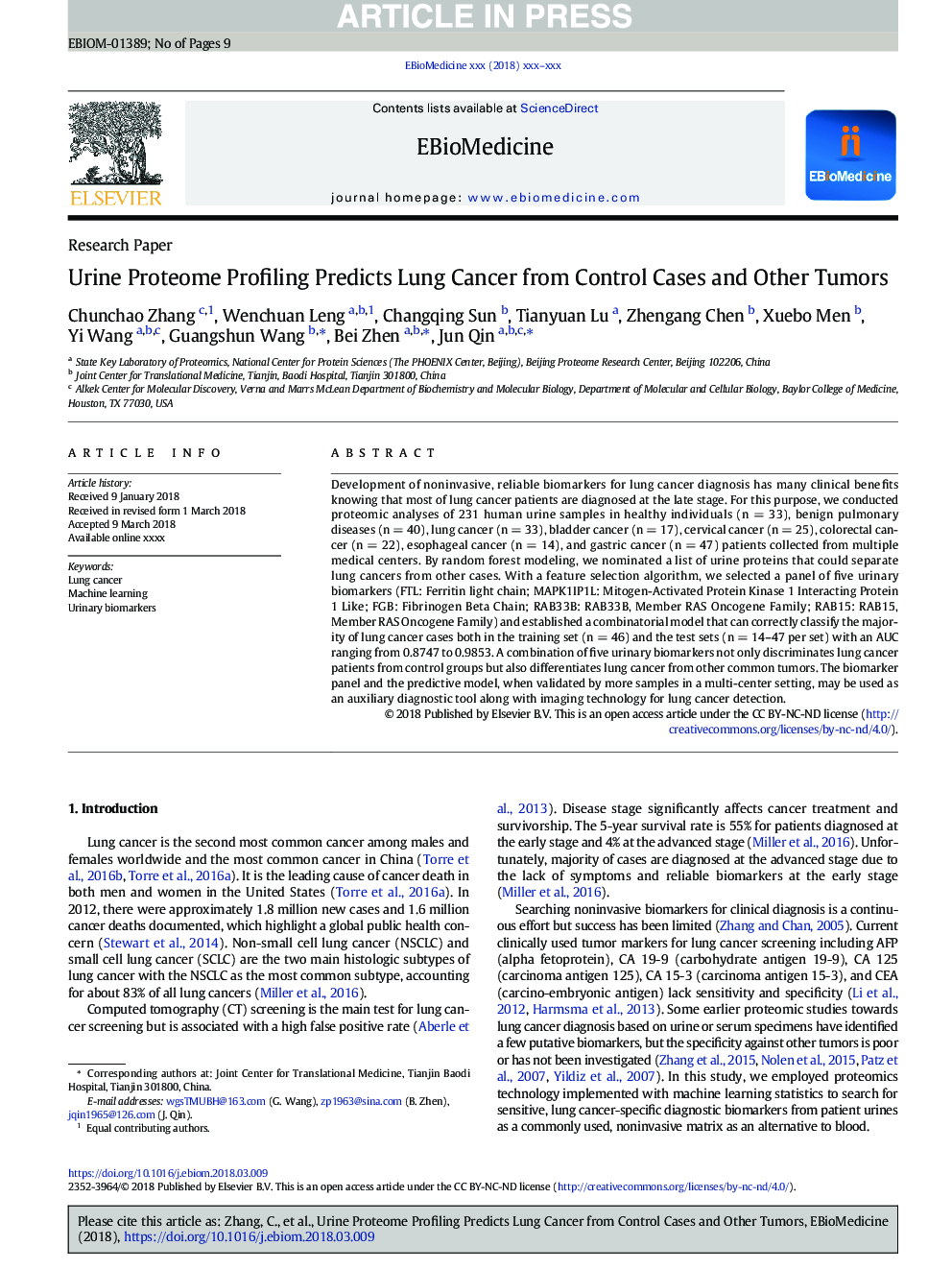| Article ID | Journal | Published Year | Pages | File Type |
|---|---|---|---|---|
| 8437321 | EBioMedicine | 2018 | 9 Pages |
Abstract
Development of noninvasive, reliable biomarkers for lung cancer diagnosis has many clinical benefits knowing that most of lung cancer patients are diagnosed at the late stage. For this purpose, we conducted proteomic analyses of 231 human urine samples in healthy individuals (n = 33), benign pulmonary diseases (n = 40), lung cancer (n = 33), bladder cancer (n = 17), cervical cancer (n = 25), colorectal cancer (n = 22), esophageal cancer (n = 14), and gastric cancer (n = 47) patients collected from multiple medical centers. By random forest modeling, we nominated a list of urine proteins that could separate lung cancers from other cases. With a feature selection algorithm, we selected a panel of five urinary biomarkers (FTL: Ferritin light chain; MAPK1IP1L: Mitogen-Activated Protein Kinase 1 Interacting Protein 1 Like; FGB: Fibrinogen Beta Chain; RAB33B: RAB33B, Member RAS Oncogene Family; RAB15: RAB15, Member RAS Oncogene Family) and established a combinatorial model that can correctly classify the majority of lung cancer cases both in the training set (n = 46) and the test sets (n = 14-47 per set) with an AUC ranging from 0.8747 to 0.9853. A combination of five urinary biomarkers not only discriminates lung cancer patients from control groups but also differentiates lung cancer from other common tumors. The biomarker panel and the predictive model, when validated by more samples in a multi-center setting, may be used as an auxiliary diagnostic tool along with imaging technology for lung cancer detection.
Related Topics
Life Sciences
Biochemistry, Genetics and Molecular Biology
Cancer Research
Authors
Chunchao Zhang, Wenchuan Leng, Changqing Sun, Tianyuan Lu, Zhengang Chen, Xuebo Men, Yi Wang, Guangshun Wang, Bei Zhen, Jun Qin,
